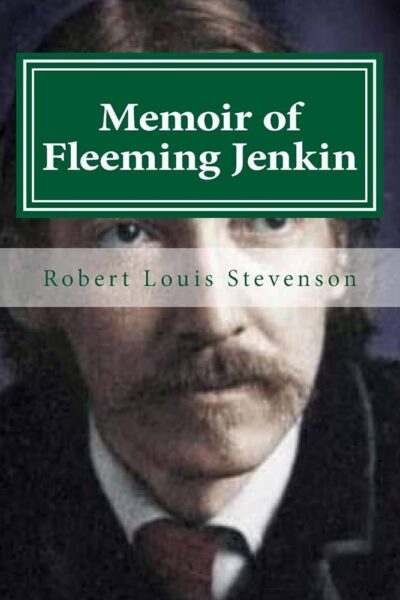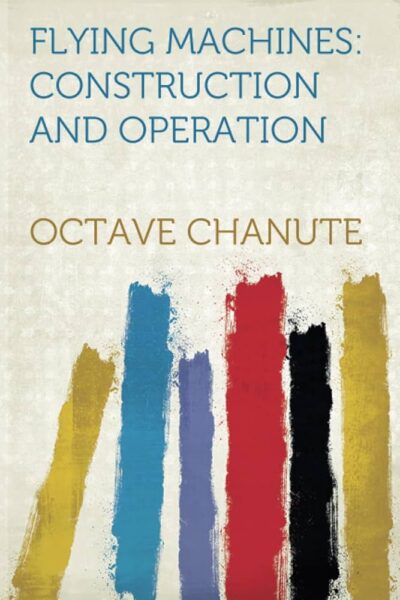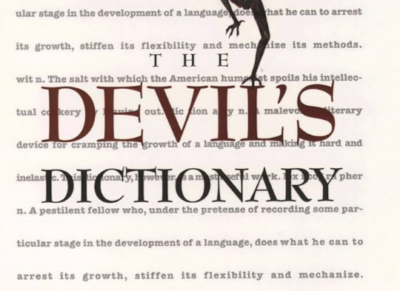54 Results in the "Non-Fiction" category
Biography & Memoir (434)
Books Like (8)
Business & Finance (26)
Children’s Fiction (203)
Dystopian (16)
Education & Learning (9)
Fantasy (1214)
fashion (1)
Fiction (4477)
Health & Wellness (21)
Historical Fiction (504)
Horror (159)
Literary Fiction (788)
Novel (229)
Others (106)
Philosophy (128)
Poetry (208)
Politics & History (131)
Posts (65)
Psychology (46)
Religion & Spirituality (1)
Romance Novel (535)
Science & Technology (82)
Science Fiction (220)
Self-Help & Personal Development (99)
Thriller / Mystery (858)
Travel & Adventure (2)
True Crime (55)
view (96)
Young Adult (284)
-
 Chapter I - Memoir of Fleeming Jenkin begins with a detailed exploration of the Jenkin family’s rich historical roots in Kent, England, tracing their lineage back to the Tudor era. Their ancestry, extending through Welsh and Yorkshire branches, reveals a longstanding connection with civic responsibility and local leadership. William Jenkin, who served multiple times as Mayor of Folkestone, symbolizes the family’s influence, further demonstrated by their acquisition of Stowting Court—a manor that…
Chapter I - Memoir of Fleeming Jenkin begins with a detailed exploration of the Jenkin family’s rich historical roots in Kent, England, tracing their lineage back to the Tudor era. Their ancestry, extending through Welsh and Yorkshire branches, reveals a longstanding connection with civic responsibility and local leadership. William Jenkin, who served multiple times as Mayor of Folkestone, symbolizes the family’s influence, further demonstrated by their acquisition of Stowting Court—a manor that…-
75.5 K • Ongoing
-
-
 Chapter I - Memoir of Fleeming Jenkin opens a window into the years between 1858 and 1873, tracing Jenkin’s vivid correspondence during his telegraphic expeditions. His early letters to Miss Austin, and later to his wife, reflect more than technical achievements—they pulse with personal conviction and warmth. Even while battling sea-sickness and shouldering intense workloads, Jenkin conveys an undiminished enthusiasm for both his mission and the world around him. Each letter reveals a man alive to the…
Chapter I - Memoir of Fleeming Jenkin opens a window into the years between 1858 and 1873, tracing Jenkin’s vivid correspondence during his telegraphic expeditions. His early letters to Miss Austin, and later to his wife, reflect more than technical achievements—they pulse with personal conviction and warmth. Even while battling sea-sickness and shouldering intense workloads, Jenkin conveys an undiminished enthusiasm for both his mission and the world around him. Each letter reveals a man alive to the…-
75.5 K • Ongoing
-
-
 Chapter I - Flying Machines Construction And Operation begins with a detailed account of how the concept of multi-surface flight evolved, laying the groundwork for future breakthroughs in aviation. Octave Chanute opens the discussion by recognizing the early insight of F. H. Wenham, who, in 1866, proposed stacking aeroplanes vertically to expand lift area without excessive weight. His design incorporated silk or canvas stretched over a framework and supported the idea of using multiple wings to lift a…
Chapter I - Flying Machines Construction And Operation begins with a detailed account of how the concept of multi-surface flight evolved, laying the groundwork for future breakthroughs in aviation. Octave Chanute opens the discussion by recognizing the early insight of F. H. Wenham, who, in 1866, proposed stacking aeroplanes vertically to expand lift area without excessive weight. His design incorporated silk or canvas stretched over a framework and supported the idea of using multiple wings to lift a…-
142.7 K • Ongoing
-
-
Chapter
Chapter I – Antecedent Events
 Chapter I - Antecedent Events begins with a portrait of early 18th-century England, where social reformers were disturbed by the harsh treatment of debtors. James Oglethorpe, deeply moved by the conditions in London’s prisons, spearheaded a vision for a colony that would rehabilitate the poor rather than punish them. He saw land in America as a means to offer a fresh start, believing that structured opportunity could restore dignity. Parliament responded, and by 1732, a charter was granted to the…
Chapter I - Antecedent Events begins with a portrait of early 18th-century England, where social reformers were disturbed by the harsh treatment of debtors. James Oglethorpe, deeply moved by the conditions in London’s prisons, spearheaded a vision for a colony that would rehabilitate the poor rather than punish them. He saw land in America as a means to offer a fresh start, believing that structured opportunity could restore dignity. Parliament responded, and by 1732, a charter was granted to the…-
28.5 K • Ongoing
-
-
Chapter
Chapter I
 The chapter opens with Mr. Jones, the neglectful owner of Manor Farm, drunkenly retiring for the night, leaving the farm unattended. Seizing this opportunity, the animals gather in the barn to hear old Major, a revered boar, share a prophetic dream. Major, a wise and aging figure, commands respect among the animals, who assemble eagerly despite the late hour. The scene is set with vivid descriptions of the animals’ arrivals, from the cautious horses to the cynical donkey Benjamin, creating a sense of…
The chapter opens with Mr. Jones, the neglectful owner of Manor Farm, drunkenly retiring for the night, leaving the farm unattended. Seizing this opportunity, the animals gather in the barn to hear old Major, a revered boar, share a prophetic dream. Major, a wise and aging figure, commands respect among the animals, who assemble eagerly despite the late hour. The scene is set with vivid descriptions of the animals’ arrivals, from the cautious horses to the cynical donkey Benjamin, creating a sense of…-
23.3 K • Ongoing
-
-
Chapter
Chapter I
 Chapter I begins with Bierce’s clever examination of the letter I, turning it into a symbol of the self—solitary, proud, and central to all communication. He notes how “I” is both a grammatical necessity and a psychological revelation, embodying the ego at the heart of every sentence. Though it seems humble on paper, Bierce shows how “I” is used to mask pride as well as to express honesty. The contrast between its singularity and the plural “we” reveals how identity can shift based on…
Chapter I begins with Bierce’s clever examination of the letter I, turning it into a symbol of the self—solitary, proud, and central to all communication. He notes how “I” is both a grammatical necessity and a psychological revelation, embodying the ego at the heart of every sentence. Though it seems humble on paper, Bierce shows how “I” is used to mask pride as well as to express honesty. The contrast between its singularity and the plural “we” reveals how identity can shift based on…-
82.1 K • Ongoing
-
-
Chapter
Chapter H
 Chapter H begins with Bierce’s wry dissection of Habeas Corpus, presented as a formal process used to release the unjustly imprisoned, yet underscored by the irony that one often needs extraordinary effort to restore basic liberty. While legally noble, the phrase is portrayed as a bandage over a flawed system—where justice exists more on paper than in practice. Bierce’s satire implies that while the law offers pathways to freedom, it also permits the existence of cages that shouldn't be there in the…
Chapter H begins with Bierce’s wry dissection of Habeas Corpus, presented as a formal process used to release the unjustly imprisoned, yet underscored by the irony that one often needs extraordinary effort to restore basic liberty. While legally noble, the phrase is portrayed as a bandage over a flawed system—where justice exists more on paper than in practice. Bierce’s satire implies that while the law offers pathways to freedom, it also permits the existence of cages that shouldn't be there in the…-
82.1 K • Ongoing
-
-
Chapter
Chapter G
 Chapter G opens with a sharp commentary on the Gallows, not just as a structure of justice, but as a morbid stage where the condemned briefly becomes the center of attention. Bierce reduces its grim function to theatrical irony, describing how society transforms punishment into performance. The accompanying verse adds that the noblest death is one delivered with absolute stillness—suggesting that dignity in the face of death may be the last illusion granted to those society condemns. By framing execution…
Chapter G opens with a sharp commentary on the Gallows, not just as a structure of justice, but as a morbid stage where the condemned briefly becomes the center of attention. Bierce reduces its grim function to theatrical irony, describing how society transforms punishment into performance. The accompanying verse adds that the noblest death is one delivered with absolute stillness—suggesting that dignity in the face of death may be the last illusion granted to those society condemns. By framing execution…-
82.1 K • Ongoing
-
-
Chapter
Chapter F
 Chapter F begins with Bierce’s playful critique of the mythical Fairy, portrayed not as a symbol of innocence but as a mischievous relic of outdated belief systems. He recalls how laws once protected these fictional beings, illustrating the absurd lengths to which societies have gone to defend the imaginary. By invoking their reported appearances in the 19th century, Bierce highlights the human tendency to embrace superstition, even when faced with advancing reason. His depiction draws attention to how…
Chapter F begins with Bierce’s playful critique of the mythical Fairy, portrayed not as a symbol of innocence but as a mischievous relic of outdated belief systems. He recalls how laws once protected these fictional beings, illustrating the absurd lengths to which societies have gone to defend the imaginary. By invoking their reported appearances in the 19th century, Bierce highlights the human tendency to embrace superstition, even when faced with advancing reason. His depiction draws attention to how…-
82.1 K • Ongoing
-
-
Chapter
Chapter E
 Chapter E opens with a humorous yet insightful look at Eating, defined by Bierce as the successful coordination of many bodily functions, distinguishing between mere consumption and the true enjoyment of a meal. This contrast highlights how the physical act of nourishment often lacks the pleasure associated with fine dining. Through a witty anecdote about the gastronome Brillat-Savarin, Bierce sets the tone for his exploration of ordinary acts, revealing their deeper cultural and emotional layers. The…
Chapter E opens with a humorous yet insightful look at Eating, defined by Bierce as the successful coordination of many bodily functions, distinguishing between mere consumption and the true enjoyment of a meal. This contrast highlights how the physical act of nourishment often lacks the pleasure associated with fine dining. Through a witty anecdote about the gastronome Brillat-Savarin, Bierce sets the tone for his exploration of ordinary acts, revealing their deeper cultural and emotional layers. The…-
82.1 K • Ongoing
-
- Previous 1 … 20 21 22 … 31 Next
